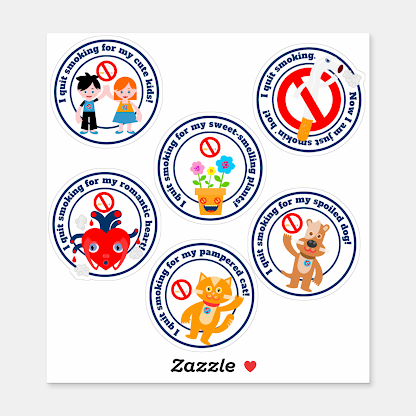Smoking prevention strategies and children
A prevention program, an action you promote in school or anywhere, or whatever you do, a mere friendly conversation, a letter or email that you write to a child, must be able to influence the attitude, the belief of that child. You can begin by emphasizing the benefits of not smoking and the disadvantages of smoking. Provide information on short-term smoking effects because children do not consider the long-term consequences. Think that if the child has friends that smoke they will try to minimize the risk of it. So build your case! They will try to point out the advantages of that behavior very strongly when confronted. The child must be made aware that those benefits are false.
Most people think that cigarettes will harm their health only in the far future. But this is not entirely correct and you must be aware of it. When smoking a cigarette the nicotine will speed up the child’s heart rate, raise her blood pressure and disturb the flow of blood and air into the lungs. This will happen within a few minutes of smoking just one cigarette. As a result, a child who smokes will feel more tired than one that does not smoke.
Nicotine will also paralyze the tiny hairs in the lung passages. These hairs help to clean dirt and germs out. If they are down then the child will start to cough, and develop a sore throat and runny nose. Probably she will get colds more often as the protection against germs will be less. The carbon monoxide in the smoke lowers the amount of oxygen carried in the blood to the rest of the child’s body, including the heart and the brain. A child who smokes has less endurance when running and playing sports and won’t be as fit as another one who doesn’t smoke. Finally, tar and cancer-causing substances are deposited in the child's airways and lungs.
Cigarette smoke has plenty of toxic and poisonous chemicals. In a word or two: the child will feel and be sick. One day she will spend time going to a doctor instead of going out to play football. Then she will have to take medicines. Eventually, she will miss school, and she will stay indoors so she can be treated. She will not be able to go out with her healthy friends to a party. This will be an unpleasant routine for the child and will be happening in the present, not in the future.
Smoking cigarettes deadens the nerve endings for smell and taste. It’s not good if one who smokes cannot smell or taste as well as a non-smoker. Smoking stains teeth with yellowish color and gives bad breath. Also leaves an unpleasant smell on clothes. So there goes the child’s allowance in mint chewing gum and spray. Smoking is expensive and if a child gets hooked on nicotine she will have to spend more money on it and less on Mp3 downloads or movies or football tickets or cool t-shirts or whatever she likes and saves money for.
As far as developing a subjective norm unfavorable to smoking point out that most people in the building where you live, neighborhood, village, city, or world… do not smoke. Movies, TV, and tobacco industry advertising created a false notion that smoking is cool and OK and quite common. Not necessarily so. Many people find smoking an unpleasant, expensive, filthy, and unhealthy habit. Many disapprove of it. Many of these people are famous people from the world of sports, movies, music, and politics. Probably you have dear friends that don’t smoke. Many people are trying to give up smoking every day. Why? They realized it was dangerous. Smokers influence non-smokers and it’s easy for these to feel that saying no to smoke can be awkward as it may be seen as implicit criticism. Smokers tend to minimize smoking risks and often talk with great conviction about their capacity of breaking free the minute they want to. Truth is very different.
Some challenging situations that a child might endure must be discussed before taking place. The child must be taught to say no when confronted with a cigarette trial offer that comes from a friend she looks up to. She must have the notion that if she’s facing any sort of difficulty at school a cigar will not help. It will not solve it and it certainly not relaxes her better than a swim in the pool or a movie or a long walk in the park or a football match. A cigar is not a fashion accessory. It simply does not add anything that so ever to one's image.
Law prohibits the sale of tobacco to underage. It’s illegal. For some children the possibility of being fined as they try to buy tobacco is real. What will they do then? Steal? At last, cigarette smoke pollutes the air people breathe and the chemicals in it are toxic and poisonous to everybody, babies, children, women, men, and even pets. It isn’t good for the planet either because the paper is needed to make cigars and cigar boxes. Smoking is not a green thing to do.
Finally, you can use techniques of commitment. It can be done just in the family circle. Let the child explain why she considers smoking a bad choice. As a consequence, she commits herself not to smoke in front of an audience. Another idea is to put in writing a sort of contract between you and the child you’re addressing. That will reinforce her behavior.
Source for main facts: Bases científicas para a prevenção do consumo de tabaco na escola, José Precioso and Manuel Macedo, Instituto de Educação e Psicologia, Universidade do Minho, Braga, Portugal

Comments
Post a Comment
Thank you very much for visiting A Portuguese Love. Come back soon!